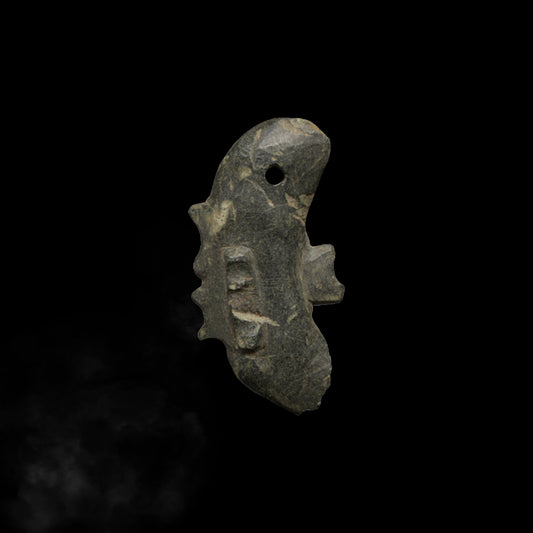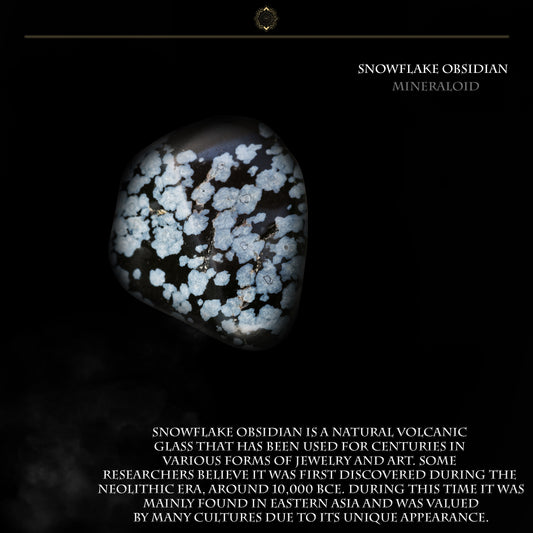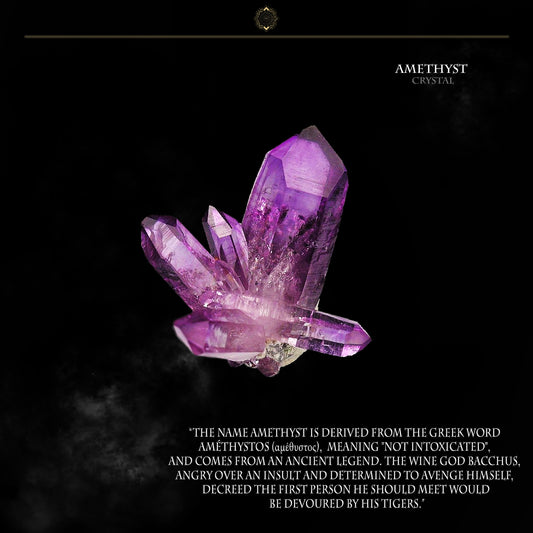
Amethyst & Dionysus the God of Wine
A stone regarded by Leonardo Da Vinci as helping to quicken intelligence and get rid of evil thoughts, amethyst was held to be one of the most precious gemstones, often favored by royalty or exclusively by the clergy as a symbol for the deity of Christ. It was even held for many years in the same regard as the diamond. Just like other geodes, Amethyst requires a hollow space in which a crystal cavity can form. It is formed inside igneous volcanic rocks called basalts, which are created by volcanic lava. These rocks act as vessels that contain minerals and water over time, creating the well-known white-purple crystal formation. The inside walls of the basalt become the base for how Amethyst forms. Aside from basalts, this gemstone can also, though not very commonly, be formed in hydrothermal veins and sedimentary rocks. For an Amethyst to form there needs to be a presence of silica and ferric iron in the water. Silicon dioxide is one of the key ingredients in its chemical structure, which is crucial for the rock-forming process. Besides these essential compounds and groundwater, there needs to be gamma irradiation in order to stimulate important processes inside the volcanic rock. The process includes different levels of calcium, oxygen, and carbon and time for a natural Amethyst to form; it can take millions of years, which is what makes them so precious.
Throughout history, amethyst has been associated with many myths, legends, religions, and numerous cultures. Ancient Greeks and Romans believed this gemstone could ward off the intoxicating powers of Bacchus and keep the wearer clear-headed and quick-witted. English regalia were decorated with amethysts during the Middle Ages to symbolize royalty; Amethyst jewelry has been found and dated as early as 2000 BC. Name from the ancient Koine Greek words amethystos methysko methyo, a phrase which translates to “not intoxicated.”.
One Story in Greek Mythology credits the god Dionysus as the creator of Amethyst. Stating that a mortal insulted the God of Wine. As a result, Dionysus became furious, vowing to avenge the insult by killing the next person to cross his path. In his anger, Dionysus unleashed furious tigers upon a beautiful young maiden. On her way to pay homage to Artemis, a goddess of childbirth, virginity and protector of young girls, bringing and relieving disease in women; she often depicted as a huntress carrying a Bow & Arrows. Yet in the very instant the tigers leaped. Artemis protected the young maiden by turning her into a statue of pure white quartz. In remorse for his actions while in a state of drunken anger. Dionysus then poured his cup of grape wine over the pure white quartz statue. Giving the quartz statue its beautiful violet-purple color as well as bestowing Amethyst with a power to prevent the effects of alcohol.
This is just one account of Amethyst in culture many in ancient Egypt wore it for protection, quick thinking and protection from witches; as well as being prominent in the bible described as being adorn in the breast plate of Aaron.
Whether its crystals are left natural, polished as tumbled stones, or faceted into magnificent jewels, Amethyst is a gem whose beauty transcends its commonality. It is a variety of Quartz found in many locations around the world. It forms as transparent, terminated crystals of all sizes in geodes, clusters, and as long single terminations. Amethyst is also found in vitreous masses and polished into wonderful specimens and personal talismans. It has been known to fade in direct sunlight and care should be taken. It is also good to clear its energies from time to time by holding the stone under running water for a short period while affirming that the stone is cleared. Keep unpolished Amethyst near other crystals to recharge them.


